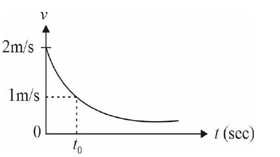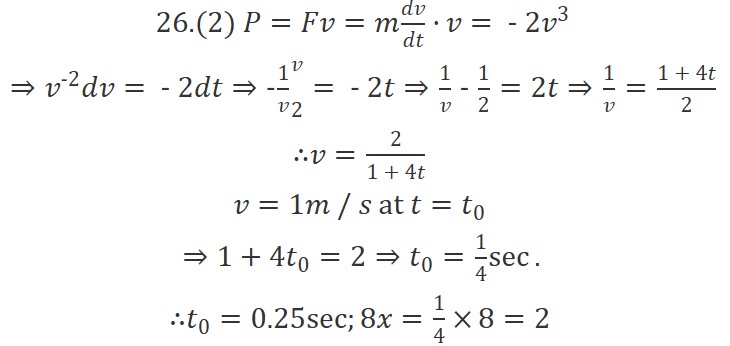A 1kg particle is moving unidirectionally on a horizontal plane under the action of power
, of power supplying energy source. The velocity (v) - time (t) graph that describes the motion of the particle is shown in figure. (Graphs are drawn schematically and are not to scale) The value of  in graph is
in graph is  sec. Find 8x
sec. Find 8x
A 1kg particle is moving unidirectionally on a horizontal plane under the action of power
, of power supplying energy source. The velocity (v) - time (t) graph that describes the motion of the particle is shown in figure. (Graphs are drawn schematically and are not to scale) The value of ![]() in graph is
in graph is ![]() sec. Find 8x
sec. Find 8x
-
1 Answer
-
Kindly consider the following Image
Similar Questions for you
Power calculations can also differ based on the nature of forces, which are as follows:
- Conservative Forces: Here, work done is path-independent. e.g., gravity, spring force
- Non-Conservative Forces: Work depends on the path. e.g., friction
Formula for Power = F·v cos
According to the question, force is perpendicular.
So = 90
and cos 90 = 0
Hence, the result turns out to be 0 i.e. no power generated inspite of force being applied.
In simple words,
Energy = total work done on an object.
Power = how fast the work is done on an object.
For example: Writing an article vs how fast you write the article. This sums up the exact meaning of both these terms.
No. Even if the power is higher, the energy can be inefficient. This happens when much of the energy generated gets wasted or isn't utilized as effectively as it should have been. In such cases, high power can still lead to inefficiency of energy.
Taking an Exam? Selecting a College?
Get authentic answers from experts, students and alumni that you won't find anywhere else
Sign Up on ShikshaOn Shiksha, get access to
- 65k Colleges
- 1.2k Exams
- 678k Reviews
- 1800k Answers


